Это включает статистический анализ преобладающих рыночных тенденций, интервью с должностными лицами компании и все остальное, что может помочь в достижении заявленной цели увеличения стоимости активов клиента. Существует возможность достижения коммерческих преимуществ посредством разумного применения управления активами и на работающих предприятиях. В течение жизненного цикла активы с долгим сроком эксплуатации обязательно проходят модернизацию, реконструкцию или восстановление, что является капитальными расходами на поддержание производства.

Узнайте, почему ведущие компании в ресурсоемких отраслях выбирают решения Maximo EAM. Поскольку за установку обновлений отвечают поставщики услуг в облаке, в вашем распоряжении всегда будут последние версии программного обеспечения с актуальным набором функций. Кроме того, SaaS быстрее и с меньшим риском интегрирует новые технологии. Повысьте производительность труда — от сбора показаний датчиков и обработки цифровых подписей до применения штрих-кодов и RFID.
Управление Активами Через Паевые Инвестиционные Фонды
В качестве такого посредника чаще всего выступает целая управляющая компания со штатом специалистов. Вы можете выбрать любого понравившегося работника на основе рекомендаций, его опыта или доходности проводимых им сделок. 3 План управления активами может быть составной частью или дополнением к стратегическому плану управления активами. Пример – Физические активы, информационные активы, http://quanchauplastic.com/kurs-rublja-rastet-blagodarja-nadezhdam-na-mir/ нематериальные активы, критические активы (3.2.7), активы систем обеспечения, линейные активы, активы информационных и коммуникационных технологий, активы инфраструктуры, движимые активы и пр. Организации, которые осуществили интегрированный подход к управлению, демонстрируют преимущества интегрированного подхода и сокращают продолжительность внедрения каждой новой системы.
- Координацию этих ресурсов, их применение, верификацию и улучшение их использования следует включить в цели системы управления активами.
- За дальнейшую реализацию стратегии будет отвечать команда из управляющих ириск-менеджеров, обладающих многолетним успешным опытом работы с выбранными активами.
- Управлять средствами на ИИС будет управляющая компания в рамках выбранной стратегии, а инвестор может регулярно следить за результатами инвестирования.
- Информация об активах, которая накапливается и регулярно актуализируется, становится доступной и прозрачной для всех уровней управления.
- К тому же надо понимать, что даже профессиональные экономисты не могут знать наверняка, что будет с тем или иным фондом через 3-5 лет.
Наши решения приносят быструю прибыль и разработаны на основе опыта внедрения сотен проектов EAM. Акселераторы отвечают стандартам и передовым практикам, могут использоваться из коробки или могут гибко адаптироваться под требования заказчика. Расширяет вашу платформу Maximo современными мобильными решениями для EAM. Наша группа сертифицированных консультантов выполняют решение задач клиента с учетом их уникальных требований в рамках обозначенного бюджета. Подготовленный персонал проходит сертификацию на соответствие квалификации в рамках International Personnel Certification . Исполнитель проводит подготовку персонала в соответствии с разработанной структурой компетентности.
Благодаря автоматизации система ITAM сама обнаружит все используемые активы, сверит их с имеющимися лицензиями, обнаружит активных или неактивных пользователей и, проанализировав данные, предложит варианты оптимизации. «Сбербанк Управление Активами» является крупнейшей компанией на рынке коллективных инвестиций, занимающей 24,8%1рынка открытых ПИФов. Средства ИИ и аналитики помогают контролировать и обслуживать ценные активы для оптимизации производительности, продления срока службы активов и сокращения времени простоев и затрат. Получение ценной информации для интеллектуального обслуживания и эксплуатации активов.
У них также, как правило, более высокие минимальные пороги инвестиций, чем у брокеров, и они взимают сборы, а не комиссионные. Когда люди вносят деньги на счет, они обычно помещаются в фонд денежного рынка, который предлагает более высокую доходность, чем обычные сберегательные и текущие счета. Владельцы счетов могут выбирать между средствами, поддерживаемыми Федеральной компанией по страхованию вкладов , и фондами, не принадлежащими FDIC. Дополнительным преимуществом для владельцев счетов является то, что все их банковские и инвестиционные потребности могут обслуживаться одним и тем же учреждением, вместо того, чтобы иметь отдельный брокерский счет и банковские опции.
При этом запасы устаревают, нужные запчасти в нужное время все-таки отсутствуют, а время простоя оборудования продолжает увеличиваться. Узнайте, какие решения используют ведущие форекс торговля по уровням мировые компании, чтобы справиться с этими вызовами и каких результатов они достигают. И всеми этими, в том числе нематериальными активами, нужно управлять как-то.
Сбер Управление Активами
1 “Обычно подразумевается” означает, что это общепринятая или специфическая практика для организации (3.1.13) и заинтересованных сторон (3.1.22), когда рассматриваемые потребности или ожидания подразумеваются. Примечание – Цели организации устанавливаются на стратегическом уровне планирования видов деятельности организации. 1 Документированная информация может храниться в любом формате, на любом носителе и иметь любой источник.
Существует и такая организация, какПИФ, организующая инвестиционное управление. Вы можете купить несколько паёв, которые являются долей общего капитала таких же вкладчиков. Передача собственных активов под контроль посредников пользуется популярностью и набирает обороты. Всё больше людей хотят получать высокие доходы, но при этом не тратить на них личное время. В качестве активов чаще всего понимается имущество предприятия, находящееся на его балансе.
Основной источник финансирования – вступительные и членские взносы, пожертвования, фонды объединений, доходы от проведения платных мероприятий. Так в «Газпромбанк — Управление активами» инвестировать в фонды онлайн можно уже от рублей. Приобретая пай в ПИФе, инвестор получает возможность вложить свои средства в самые разные активы. ПИФы доступны очень широкому кругу инвесторов благодаря низкому порогу входа. Зарегистрироваться в личном кабинете управляющей компании или прийти в офис, чтобы заключить договор. Активы— это программное обеспечение, оборудование и любые другие физические единицы, которыми владеет компания.

Оценку достигнутых результатов системой управления активами следует проводить на соответствие выполнения целей, установленных конкретно для самой системы (установленных или на этапе ее создания или в установленных по итогам предшествующих оценок). Главной целью оценки системы следует считать определение ее эффективности и результативности в поддержке деятельности организации по управлению активами. Для оценки соответствия системы управления активами используются периодические аудиты; они могут быть дополнены проведением самооценки. Система управления активами предоставляет информацию для поддержки разработки планов по управлению активами и оценки их эффективности. Информационные системы, используемые для управления активами, могут быть очень большими и сложными для некоторых организаций.
Передать управление акциями или валютой можно профессиональному брокеру. Эта организация часто имеет площадки как для торгов ценными бумагами, так и валютой. Если вы хотите нарастить капитал или просто сохранить его, то вам дорога в банки. Здесь можно открыть вкладпод небольшой процент на срок от 3 месяцев до 3 лет. Возможно, вы оставляете свою недвижимость для присмотра и оплаты коммунальных платежей на время длительного отпуска. Чтобы третье лицо приступило к управлению вашими активами, необходимо заключать специальный договор.
Понять Неверно Потенциальные Последствия, Влияние На Профили Рисков Организации
Информация о закупочной стоимости оборудования переносится из системы бухгалтерского учёта в ITSM-систему. При выдаче расходных материалов и комплектующих сотрудники МТО указывают цену единицы. Наличие указанной информации в системе позволяет строить отчёты, необходимые при проведении http://www.marieshus.com/obzor-brokera-fxnet-razvod-ili-net-uznaj-na-forex4free/ анализа затрат. Для целей учёта расходных материалов и комплектующих был реализован механизм регистрации их использования. В системе автоматизации регистрируются факты выдачи резервного фонда со склада в ИТ-подразделения, осуществляющие замену картриджей и модернизацию оборудования.

Наши специалисты помогут подобрать те продукты, которые соответствуют Вашим ожиданиям по уровню доходности, лояльности к риску и сроку, на который Вы готовы инвестировать средства. Любые инвестиции в ценные бумаги являются в определенной степени рискованными. Существует вероятность возникновения реального ущерба или упущенной выгоды при осуществлении топ платформ для трейдинга 2020 Управляющей компанией доверительного управления. Результаты деятельности Управляющей компании в прошлом не определяют доходы в будущем. При подписании договора доверительного управления управляющий обязан ознакомить учредителя управления с рисками осуществления деятельности по управлению ценными бумагами на рынке ценных бумаг.
Справочная Информация
На предыдущих этапах была разработана методологическая основа системы управления активами. Примечание – Утолщенной линией обозначены границы системы управления активами. На рисунке В.1 приведена взаимосвязь между ключевыми элементами системы управления активами.
Что Такое Доверительное Управление Активами
Перечень передаваемого в эксплуатацию оборудования фиксируется в специальном объекте – договоре обслуживания. Внести новую позицию в спецификацию договора можно только в том случае, если модель этого оборудования включена в перечень допустимых. После того, как мы разобрались, зачем, что и кто должен делать, чтобы обеспечить работу нашего процесса, нужно решить, как это должно делаться. Контекст вопроса лежит в технической области, то есть в области функционала внедряемой системы автоматизации.
При профессиональном подходе к анализу перспектив ПИФа каждый параметр является важным и ничто не упускается из виду. Начинающие инвесторы могут опираться только на показатель доходности и уровень риска фонда. Чтобы минимизировать риски при вложении денежных средств, желательно получить консультацию у специалиста – сделать это можно на сайте управляющей компании, на странице детального описания интересующего фонда. Доходность паевого инвестиционного фонда – ключевой показатель, который интересует потенциальных вкладчиков в первую очередь. Если уровень доходности за последние несколько лет всё время растет, то шанс его резкого спада минимальный. Сбербанк в открытом доступе – на сайте управляющей компании – размещает информацию о доходности каждого фонда, любой гражданин может обратиться к сравнительной таблице роста всех ПИФов или графикам роста конкретных фондов.
Что Такое Управление Активами
Предоставьте в распоряжение технических специалистов интеллектуальное мобильное ПО для управления активами предприятия , позволяющее управлять любыми активами — когда угодно и где угодно. Предприятия атомной отрасли задействуют управление работами и активами для решения вопросов соблюдения нормативных требований благодаря поддержке рабочих процессов, эскалаций, управления состояниями и электронных подписей. Решения учитывают строгие требования в сфере охраны труда и техники безопасности.
При этом рост количества активов ведет к увеличению сложности управления этими активами и необходимости выстраивания эффективной системы управления. Глобализация рынка, слияния и поглощения, диверсификация, горизонтальная и вертикальная интеграция – все это приводит к тому, что инвестиционные и управляющие компании курируют все большее количество активов, стоимость которых постоянно должна расти. Рекомендуемые минимальные сроки зависят от риск-профиля вашей стратегии, ситуации на рынке и от структуры вашего портфеля в целом. Список стратегий доверительного управления от УК БКС вы можете посмотреть здесь. Доверительное управление подходит тем, кто ценит время, хочет инвестировать без лишних усилий, или имеет небольшой опыт самостоятельного инвестирования.
А это означает, что актив не может быть передан на обработку какой-то конкретной рабочей группе внутри ИТ-департамента непосредственно после его регистрации бухгалтерией. В нашем случае проблема была решена посредством выделения в составе ИТ-департамента особой рабочей группы, ответственной за разбор поступлений из бухгалтерской системы. Одной из важнейших составляющих этой деятельности является инвентаризация, о которой хотелось бы поговорить подробнее. Да потому что поставщик ИТ-услуг (наш заказчик) обеспечивает всевозможным оборудованием большую часть своих клиентов. Инвентаризация является важнейшим инструментом контроля активов, являющихся собственностью поставщика ИТ-услуг, но находящихся в эксплуатации в обслуживаемых организациях.
Это также будет способствовать осведомленности о целях управления активами в организации. Высшее руководство и руководители всех уровней несут ответственность за информирование работников организации, потребителей, поставщиков и других заинтересованных сторон о целях организации в области управления активами и их значении. Информирование следует организовать так, чтобы оно носило двусторонний характер, для того чтобы руководители имели возможность получать от заинтересованных сторон информацию, касающуюся улучшения системы управления активами организации. Создание системы управления активами является важным стратегическим решением для организации. ИСО устанавливает требования к системе управления активами, но не содержит требования относительно разработки системы.
Очевидно, что выбор между управлением конфигурациями и управлением активами зависит от того, чем именно вам нужно управлять. В терминах ITIL конфигурационными компонентами нужно управлять для того, чтобы предоставлять сервисы, а актив — это ресурс или способность, которые участвуют в предоставлении сервисов. При необходимости один и тот же объект можно интерпретировать как CI или как актив. В данной статье мы рассмотрели подход к проектированию, позволяющий правильно расставить акценты при подготовке организационно-технических решений. Подход помогает обеспечить соответствие результатов бизнес-целям, эффективно определить состав деятельностей и ролей процесса. При регистрации обращения оператор первой линии, после указания в карточке обращения его инициатора, видит закреплённые за инициатором и его подразделением ИТ-активы.
Вы также можете сами досрочно завершить стратегию, вложить дополнительные средства, вывести часть дохода или выбрать другую стратегию в зависимости от условий, предусмотренных по конкретным стратегиям. Главное преимущество брокер управления активами Вандерланде заключается в интеграции нашего опыта из других областей для создания наилучшего и наиболее полного решения. Этого можно достичь только в тесном сотрудничестве с Вами — владельцем активов.
Чтобы разобраться с этим, нужно опять-таки ответить себе на вопрос “Зачем?”. Вспоминаем пункты из перечня бизнес-потребностей про необходимость подробного материального учёта и, одновременно, ограничение охвата обслуживания. Не располагая информацией о том, где и кем эксплуатируются те или иные рабочие станции, мы не смогли бы эти требования выполнить. Столь подробный учёт привёл к появлению в базе конфигураций управление активами что это порядка 15 тысяч позиций. По каждой единице оборудования ИТ-организация теперь располагает полной информацией о её характеристиках, производителе, пользователе, а также может легко идентифицировать оборудование, которое не находится на обслуживании. Если первоисточником информации о поступлении закупленных активов является бухгалтерская система, необходима её интеграция с системой учёта активов.
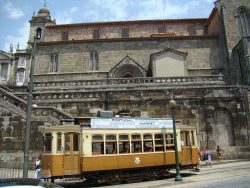 We are going to start our “painstaking” tour of Lordelo do Ouro, let yourself be dazzled by one of the most beautiful and picturesque places of Invicta, where the Douro River meets the Atlantic.
We are going to start our “painstaking” tour of Lordelo do Ouro, let yourself be dazzled by one of the most beautiful and picturesque places of Invicta, where the Douro River meets the Atlantic.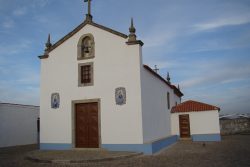
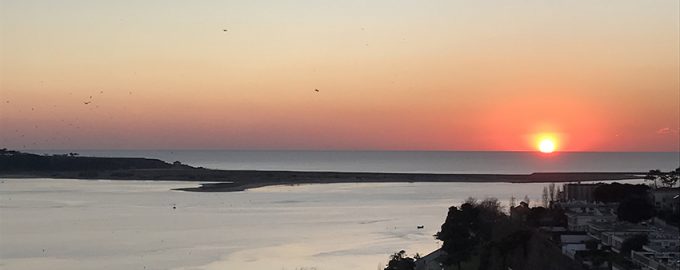
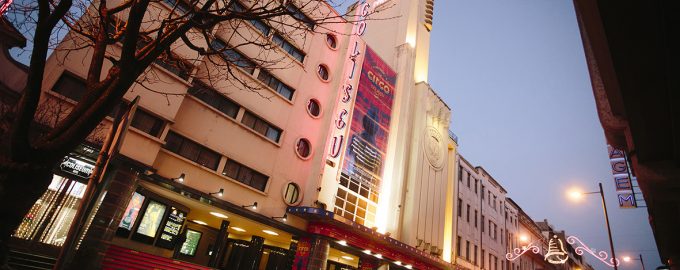
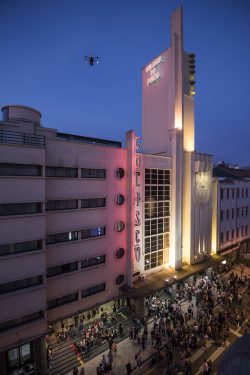 In Porto’s imaginary, the Coliseu do Porto occupies a very special place and is, without detriment to the others, the first showroom in the city, perhaps because it has been regularly and from the beginning involved in controversies.
In Porto’s imaginary, the Coliseu do Porto occupies a very special place and is, without detriment to the others, the first showroom in the city, perhaps because it has been regularly and from the beginning involved in controversies.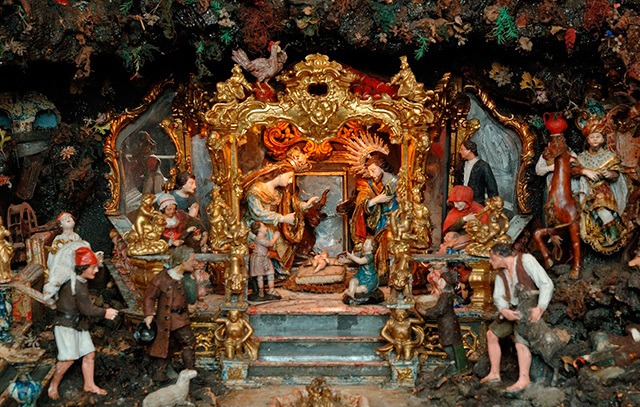
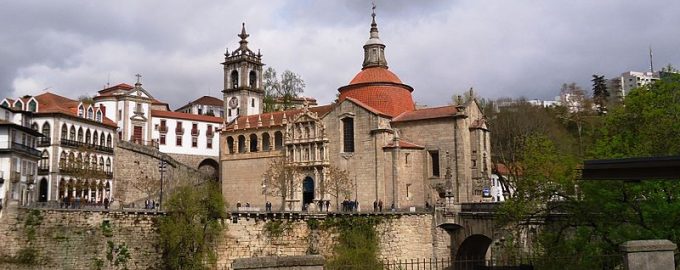
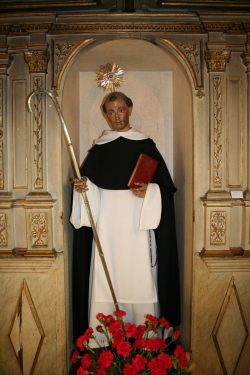 São Gonçalo de Amarante was born around 1190, in the parish of S. Salvador de Tagilde, in the municipality of Vizela, in a noble family (the Pereiras). Under the protection of the archbishop of the Archdiocese of Braga, Gonçalo attended ecclesiastical disciplines at the Cathedral School of the Archiepiscopal See, becoming ordained priest and appointed parish priest of the parish of S. Paio (or S. Pelagius) of Riba-Vizela. He first went on pilgrimage to Rome from where he went to Jerusalem, where he took 14 years, leaving the parishioners in the care of a nephew priest. Returning to Portugal, he is chased away by the same that through a plot would have been named like parish priest. Resigned, he leaves S. Paio de Riba-Vizela, joins the conventual life of the Order of Preachers, recently founded by S. Domingos, building a small chapel dedicated to Our Lady of the Assumption, on the banks of the River Tâmega. where today stands the São Gonçalo Church and Convent in Amarante. The process of beatification was promulgated on September 16, 1561. Devotion to the most popular saint of the Portuguese saints, after Saint Anthony of Lisbon, spread throughout Portugal and Brazil. In 1540 John III of Portugal and D. Catarina of Austria decided to build a new Dominican temple and convent on the site, under the invocation of Gonçalo de Amarante. The works began in 1543, extending to the eighteenth century, with interventions in the twentieth century.
São Gonçalo de Amarante was born around 1190, in the parish of S. Salvador de Tagilde, in the municipality of Vizela, in a noble family (the Pereiras). Under the protection of the archbishop of the Archdiocese of Braga, Gonçalo attended ecclesiastical disciplines at the Cathedral School of the Archiepiscopal See, becoming ordained priest and appointed parish priest of the parish of S. Paio (or S. Pelagius) of Riba-Vizela. He first went on pilgrimage to Rome from where he went to Jerusalem, where he took 14 years, leaving the parishioners in the care of a nephew priest. Returning to Portugal, he is chased away by the same that through a plot would have been named like parish priest. Resigned, he leaves S. Paio de Riba-Vizela, joins the conventual life of the Order of Preachers, recently founded by S. Domingos, building a small chapel dedicated to Our Lady of the Assumption, on the banks of the River Tâmega. where today stands the São Gonçalo Church and Convent in Amarante. The process of beatification was promulgated on September 16, 1561. Devotion to the most popular saint of the Portuguese saints, after Saint Anthony of Lisbon, spread throughout Portugal and Brazil. In 1540 John III of Portugal and D. Catarina of Austria decided to build a new Dominican temple and convent on the site, under the invocation of Gonçalo de Amarante. The works began in 1543, extending to the eighteenth century, with interventions in the twentieth century.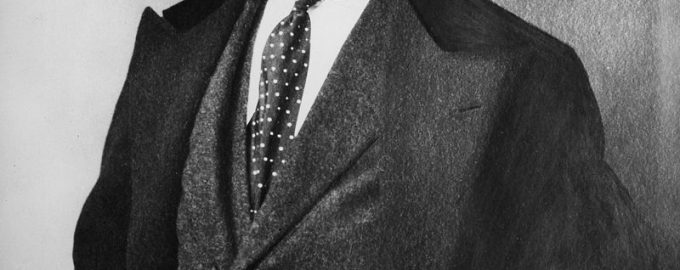

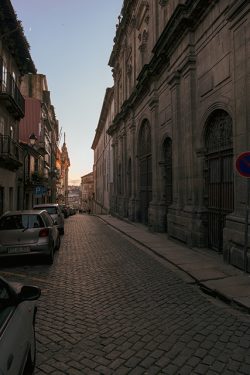 The taste and passion for photography set the tone for my suggestion to discover Porto from a more artistic and aesthetic perspective. With the “Aliados” as their starting point, surrounded by some landmark buildings, with new and luxurious hotels that dot the city, historic cafes, buildings that once hosted banks, the City Hall, etc., we can easily choose any direction, which We will certainly not be disappointed.
The taste and passion for photography set the tone for my suggestion to discover Porto from a more artistic and aesthetic perspective. With the “Aliados” as their starting point, surrounded by some landmark buildings, with new and luxurious hotels that dot the city, historic cafes, buildings that once hosted banks, the City Hall, etc., we can easily choose any direction, which We will certainly not be disappointed.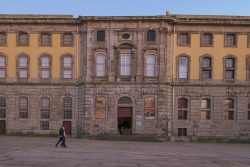 ending in the beautiful Passeio das Virtues are unavoidable places to go, which I revisit and recommend.
ending in the beautiful Passeio das Virtues are unavoidable places to go, which I revisit and recommend.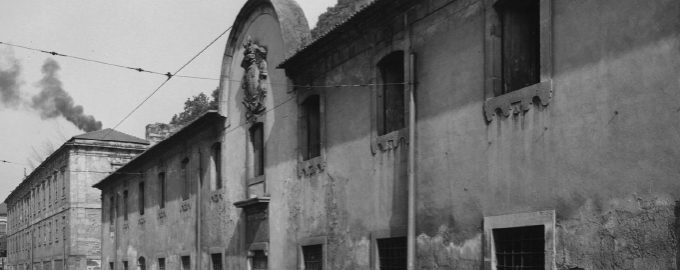
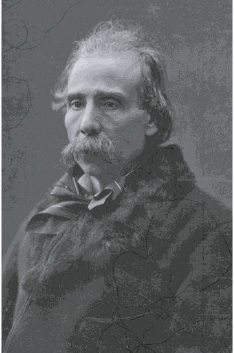 Amor de Perdição is a novel written by Camilo Castelo Branco, in 1862, which narrates the tragic story of young love. The tale, based on true facts, was written when Camilo was imprisoned and living a forbidden love himself.
Amor de Perdição is a novel written by Camilo Castelo Branco, in 1862, which narrates the tragic story of young love. The tale, based on true facts, was written when Camilo was imprisoned and living a forbidden love himself.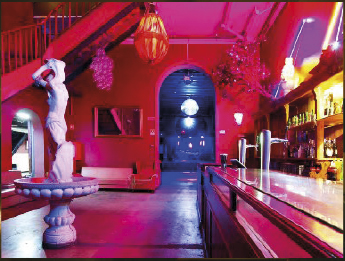
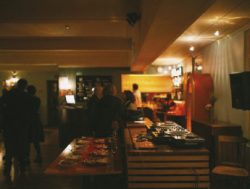 For new discoveries, Maus Hábitos, a reference in the city since its opening in the year when Porto was the European capital of culture and with a programme that focuses on discovering new sounds.
For new discoveries, Maus Hábitos, a reference in the city since its opening in the year when Porto was the European capital of culture and with a programme that focuses on discovering new sounds.
